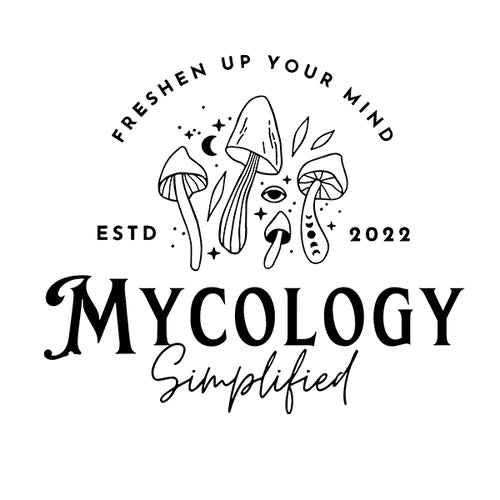
Safeguarding Your Mushroom Grow Space: Comprehensive Contamination Prevention
Compartir
Safeguarding Your Mushroom Grow Space: Comprehensive Contamination Prevention
Cultivating mushrooms can be an incredibly fulfilling journey, but the challenge of contamination can often feel like a stumbling block. Contamination is more than just an inconvenience—it’s a direct threat to your harvest. Let’s explore a fresh and thorough approach to understanding, preventing, and managing contamination in your mushroom grow area.
What Is Contamination, and Why Does It Matter?
In mushroom cultivation, contamination refers to the invasion of undesirable organisms, such as mold, bacteria, or pests, that disrupt the delicate environment required for mushrooms to thrive. These invaders can:
- Compete with mushrooms for nutrients.
- Spread rapidly, causing crop losses.
- Introduce health risks depending on the type of contamination.
Understanding contamination sources and taking proactive steps to mitigate them is the foundation of successful cultivation.

Key Sources of Contamination in Mushroom Cultivation
-
Environmental Factors:
- Airborne spores and dust particles can easily settle on exposed surfaces and substrates.
- High humidity and stagnant air create perfect conditions for mold and bacteria to proliferate.
-
Materials and Substrates:
- Poorly prepared substrates can harbor dormant contaminants.
- Using untreated or improperly stored materials increases contamination risk.
-
Human Interaction:
- Handling tools or substrates with unclean hands or clothing can introduce bacteria or mold spores.
- Cross-contamination can occur when moving between different cultivation tasks without proper sanitation.
-
Water Quality:
- Water that hasn’t been filtered or treated can carry harmful microorganisms.
Strategies for a Contamination-Free Grow Space
1. Establish a Dedicated Grow Area
- Choose a space that can be easily cleaned and kept separate from other household or outdoor activities.
- Limit access to minimize external contamination risks.
2. Cleanliness Is Non-Negotiable
- Routine Cleaning: Wipe down all surfaces with a suitable disinfectant, such as 70% isopropyl alcohol or hydrogen peroxide, before and after each use. Also consider a product like In-Cyde (an ammonia-based cleaner) for thorough sanitation.
- Declutter Regularly: Remove unnecessary items to reduce hiding spots for contaminants.
- Deep Cleaning: Periodically conduct a thorough cleaning of the entire grow space, including walls, floors, and ceilings.
3. Optimize Substrate Preparation
- Sterilize substrates using a pressure cooker, autoclave, or by boiling to eliminate pathogens.
- For certain substrates, pasteurization can be effective. Heat the material to 140–160°F (60–71°C) for an hour to kill harmful organisms without destroying beneficial ones.
4. Maintain Ideal Environmental Conditions
- Humidity and Temperature: Use a hygrometer and thermometer to monitor levels. Adjust as needed to prevent conditions that promote mold growth.
- Air Circulation: Install fans or air exchange systems to keep air moving. For extra protection, consider using HEPA filters to reduce airborne contaminants.
5. Prioritize Personal Hygiene
- Always wash hands with soap and water before handling any materials.
- Wear clean, dedicated clothing, and use gloves and a mask.
- Sanitize tools and equipment frequently, especially between tasks.
Advanced Contamination Prevention Techniques
-
Laminar Flow Hoods
These specialized hoods create a sterile airflow over your work area, preventing contaminants from settling during critical tasks like inoculation.
-
Still Air Boxes (SABs)
- A Still Air Box is a simple, cost-effective tool that provides a controlled environment for handling sterile materials. Unlike laminar flow hoods, an SAB works by preventing airflow entirely, creating a "still air" space where contaminants are less likely to move and settle.
- How to Use: Place all tools, materials, and containers inside the SAB. Work slowly and carefully to avoid stirring up air within the box.
- Benefits: Affordable and easy to make at home using a clear plastic tote with armholes cut into it. SABs are highly effective for inoculation and other delicate procedures where sterility is crucial.
-
Biological Controls
Beneficial microorganisms can be introduced into the grow environment or substrate to outcompete harmful ones, creating a natural defense system.
-
UV Sterilization
Use UV lights to sanitize surfaces and equipment, ensuring an added layer of protection.
-
Pre-Sterilized Materials
Consider using pre-sterilized substrates or grains if you lack the tools for proper sterilization. These products save time and reduce contamination risks. Check out our selection of sterile substrates here.
Responding to Contamination
Even with the best precautions, contamination may occur. Here’s how to handle it:
- Early Detection: Regularly inspect your grow area for signs of contamination, such as discoloration, unusual odors, or abnormal growth patterns.
- Isolate the Issue: Remove contaminated materials immediately to prevent the spread to healthy substrates or mushrooms.
- Disinfect Thoroughly: Clean and sanitize the affected area to ensure no lingering spores or bacteria remain.
- Review Practices: Assess what may have gone wrong and adjust your processes to prevent future incidents.

Final Thoughts
Prevention is the cornerstone of successful mushroom cultivation. By creating a clean, controlled environment and adopting rigorous hygiene and preparation practices, you can dramatically reduce contamination risks. With attention to detail and the right tools, your mushrooms will have the ideal conditions to flourish.
Happy cultivating!
